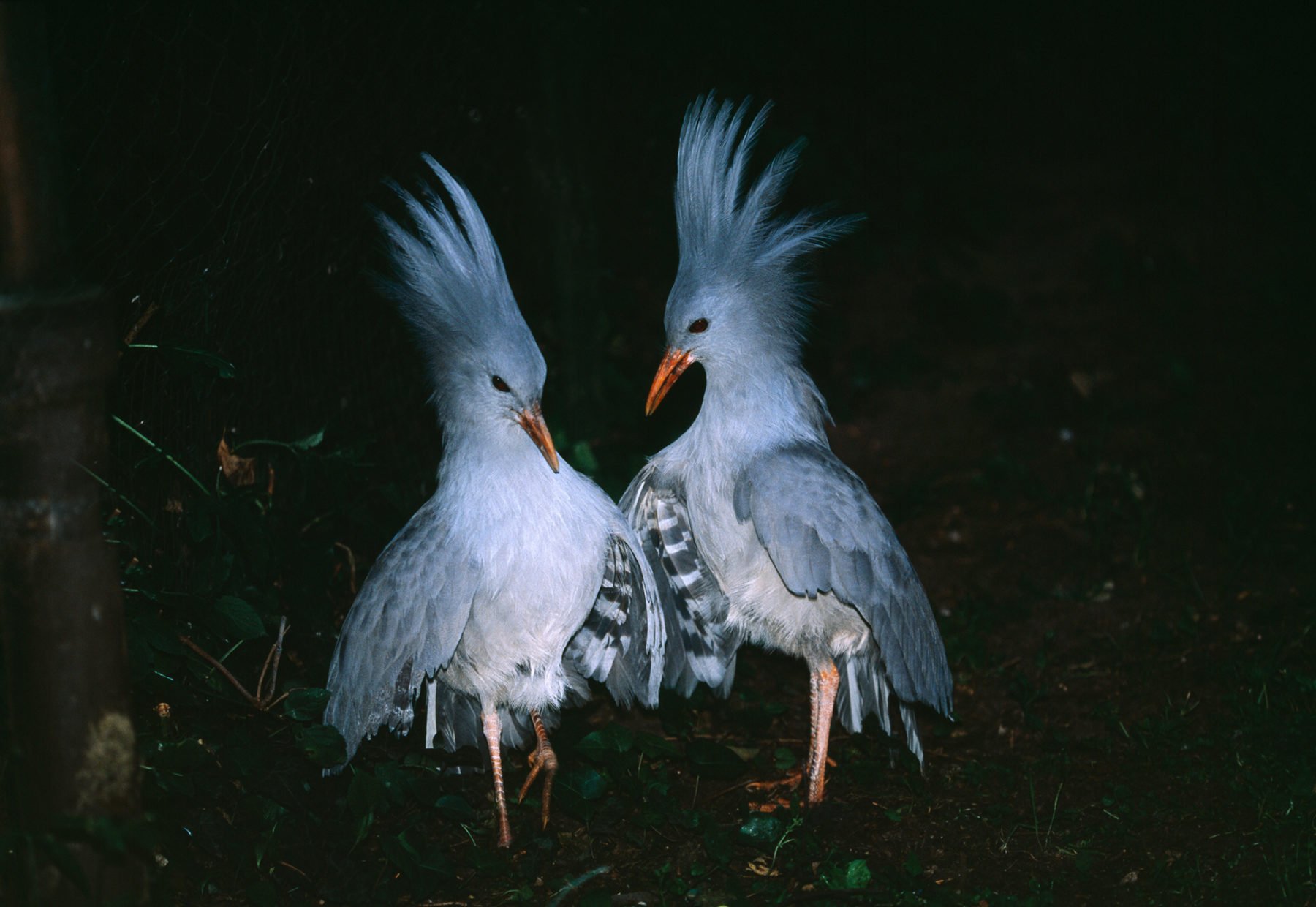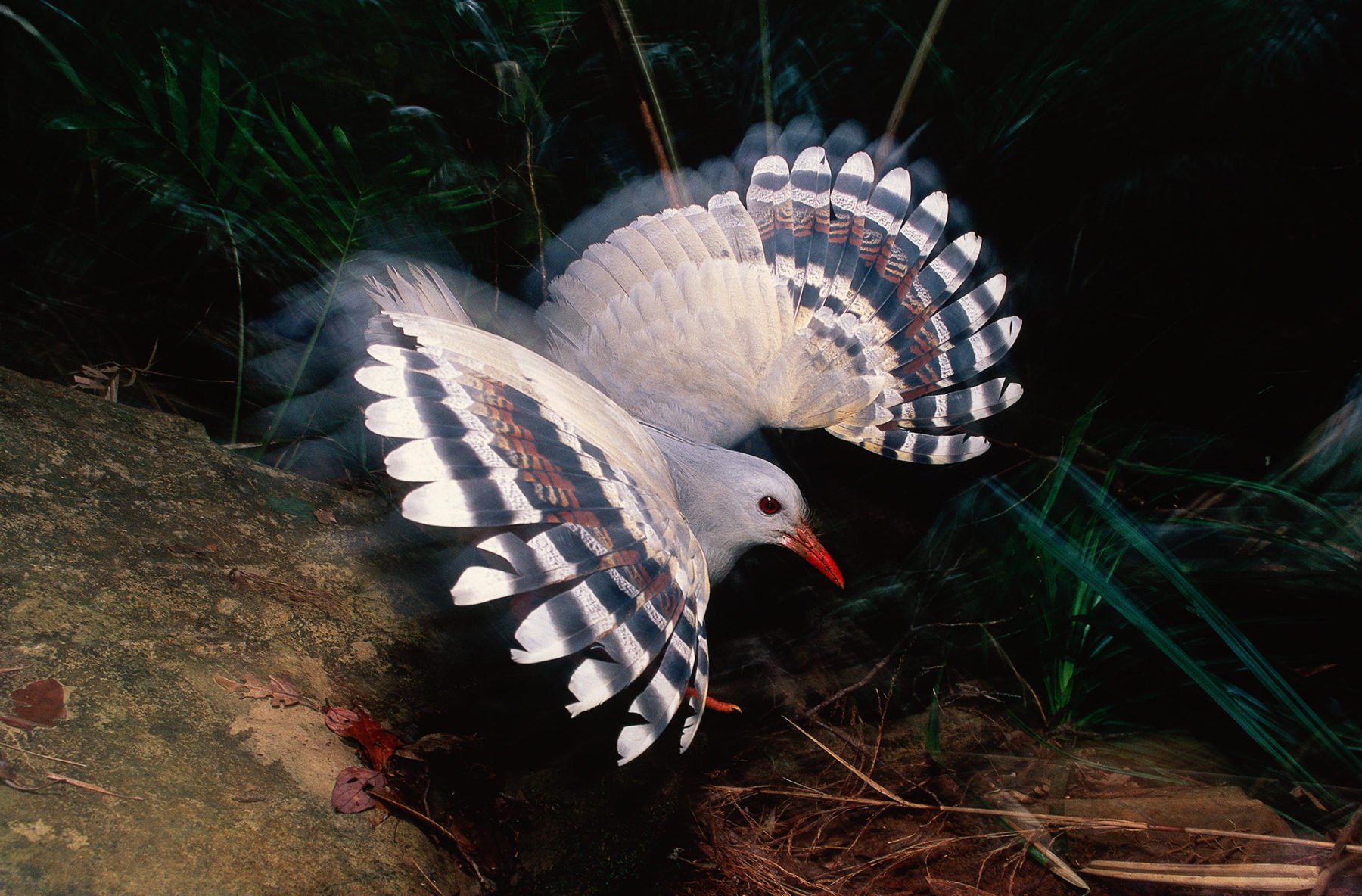Meet the ghost of the forest: the rare, flightless kagu

Bec Crew
Bec Crew

Restricted to the dense mountain forests and shrubland of Grande Terre, the main island of New Caledonia, the kagu is the only living species of both its genus and family.
With its ash-grey plumage, decorated wings, and an impressive crest that unfurls during courtship and competitive displays, the kagu has captured the imagination of those lucky enough to encounter one in the wild.
Its loud cries, which echo over great distances in the early hours of the morning, have inspired New Caledonia’s Indigenous population, the Kanaks, to refer to this mysterious bird as the ‘ghost of the forest’.
The kagu’s scientific name, Rhynochetos jubatus, comes from the Greek word rhis, meaning nose, and chetos, meaning corn, which refers to the small structures that sit over the nasal openings on its beak. Known as ‘nasal corns’, these features have not been found on any other species of bird in the word.
It’s thought that perhaps the kagu evolved its nasal corns to prevent dust and other particles from entering its nostrils, because it spends so much time with its beak down in the dirt, rooting around for snails, bugs, lizards and worms. It spends its whole life low the ground; for the most part, this nearly flightless bird uses its large wings for displays only.
And what displays they are. During courtship rituals and territorial disputes, kagus will raise their crests, stand up straight and tall, fan their wings out, and ‘dance’ around each other.

Sometimes this dancing can play out in rather awkward fashion, as these kagus demonstrate:
When threatened, the kagu will open its wings and point them towards its predator, in hopes that it will confuse them. As you can see from the photo below, this can be quite imposing:

Sadly, kagus are in a very precarious position. It’s estimated that there are fewer than 2,000 individuals left in the wild, due to threats such as feral cats and dogs.
In 2017, a major kagu population in Parc des Grandes Fougères, a wildlife refuge in New Caledonia, was decimated after two dogs killed half of all radio-tagged individuals over two months. The population was thought to have been 1,000-strong at the time, but the attacks resulted in more than 75% of the kagu families in the park being destroyed. The species is now classified as endangered.
Some scientists suspect that the kagu’s closest relative is the lowland kagu (Rhynochetos orarius), which went extinct long ago. It’s known from partially fossilised bones found at the Pindai Caves paleontological site on Grande Terre.
We’ll leave you with some more footage of a kagu showing off its defensive abilities:

